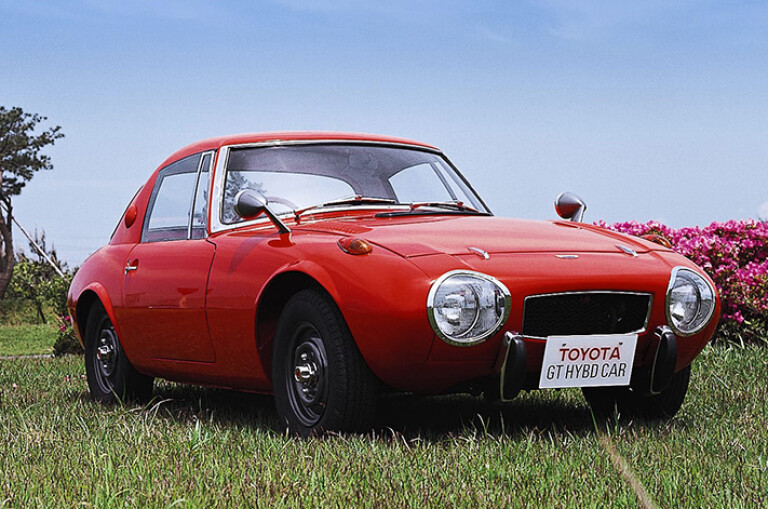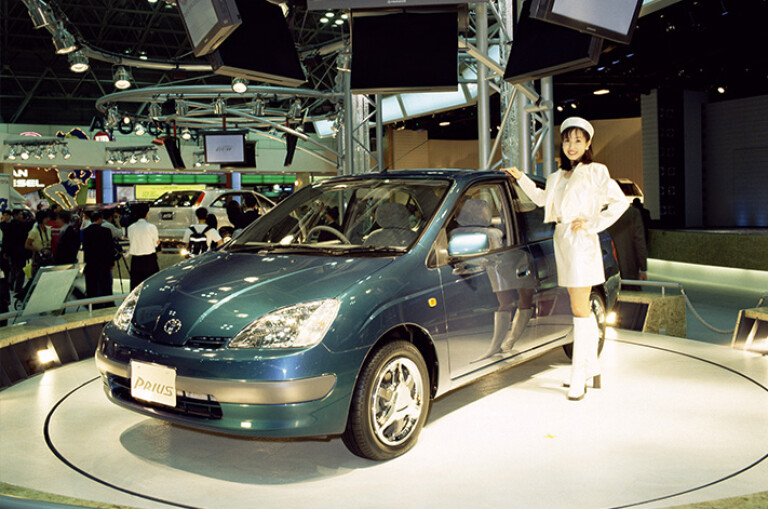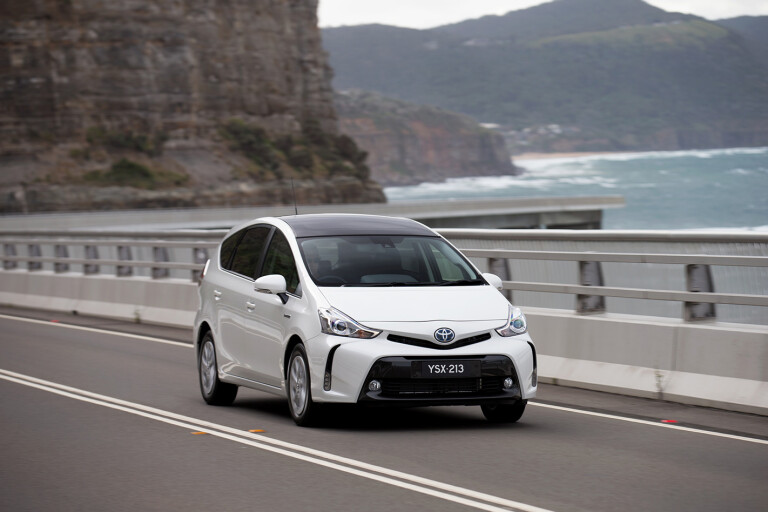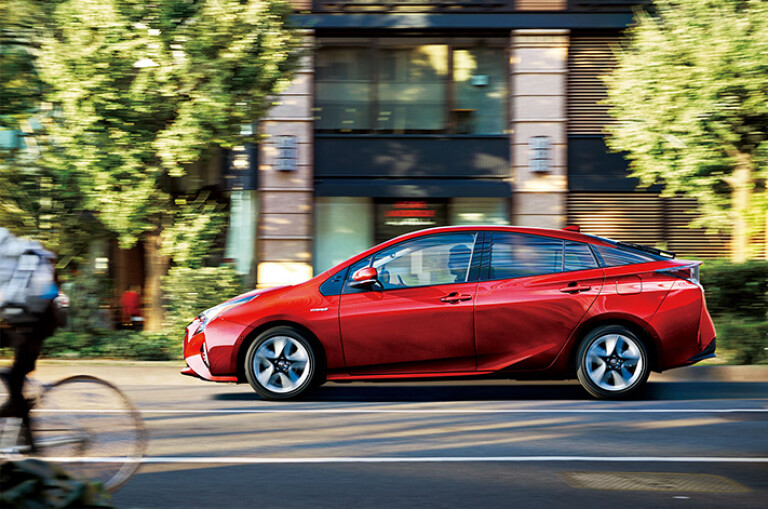
On the same day that Apple discontinued the iPod after 21 years, Toyota Australia retired another cultural icon and household name – the Prius hybrid.
The petrol-electric Prius debuted in Australia in 2001, the same year Apple’s digital music player was born.
Toyota’s hybrid sedan wasn’t as revolutionary as the iPod, and it certainly wasn’t as popular initially, yet the Prius can claim to have single-handedly dragged hybrid vehicles from the realm of early adopters and deep into the mainstream.
While not a car loved by all, the Prius’s immense influence on the car industry can’t be ignored.
And with that in mind, here’s a quick Wheels guide to the history of Toyota’s genuine game-changer.

Toyota's first hybrids
The Prius wasn’t Toyota’s first effort at creating a hybrid.
One of Toyota’s earliest experiments with hybrid propulsion involved engineers jamming a jet engine into the tiny Sports 800 two-door, to run a generator that in turn supplied volts to an electric motor.
The Prius would never be as cool as a jet-powered sports car, though.
Nor would it be Toyota’s first road-going hybrid vehicle. That honour goes to the Coaster Hybrid EV minibus, which launched just a few months before the Prius in August 1997.

First-generation Toyota Prius (2001-2003)
The name Prius is virtually a synonym for “hybrid” these days, though it’s actually Latin for “to go before”.
Petrol-electric hybrids weren’t exactly a new idea by the time the first-generation Prius launched in Japan in 1997, yet the Prius did something that other manufacturers had so far failed to do – it made hybrids not only available, but affordable. A claimed average consumption of 3.57L/100km was revolutionary for the time, too.
A US launch followed in 2000, before it reached Australia in 2001.
The Prius wasn’t the first hybrid car to go on sale here, though. It was pipped by the Honda Insight by about six months, though its even quirkier, three-door, three-cylinder hybrid rival lasted just three years.

Second-generation Prius (2003-2009)
The second-generation Prius took Toyota’s hybrid tech global in 2003. This was also the car that established the aerodynamically arched roof profile that would later typify the Prius, and it was the model that would eventually make the Prius a household name.
Its claimed average fuel consumption of 2.8L/100km helped, but Hollywood also had a big part to play in the Prius’s fortunes. Celebrity owners keen to wear their eco-friendliness on their high-profile sleeves adopted the Prius as a status symbol, with the likes of Harrison Ford, Matt Damon, Julia Roberts, Natalie Portman and Leonardo DiCaprio all spotted behind the wheel of Toyota’s hybrid hunchback. Its aero-optimised shape was unmistakeable in traffic – a handy thing for when you want people to notice your choice of wheels.
A perceived righteousness of some Prius owners spawned the appearance of a Toyonda Pious in a 2006 episode of Canadian animated series South Park.

Third-generation Prius (2009-2015)
A third-generation Prius launched in 2009, with its Atkinson-cycle four-cylinder engine growing from 1.5 litres to 1.8 litres while average consumption further improved by more than 10 per cent to 3.9L/100km.
At launch, this Prius – at the time the world’s most aerodynamically efficient car with a 0.25 co-efficient of drag – was the only car in Australia to have an emissions figure below 100 grams per kilometre (89g/km).
The bigger engine also contributed to a 21 per cent bump in combined power to 100kW, though the Prius remained relatively slow with a 0-100km/h time of 10.4 seconds (previously 10.8sec).
Standard safety improved and new technology included a head-up display.
By now, however, some of the technology aboard the Prius was starting to look old. Nickel-metal hydride batteries only supplied enough juice for a few kilometres of EV-mode travel at most.
Although this generation did see the gradual introduction of lithium-ion batteries, these versions weren’t imported to Australia.

A Prius family!
The growing popularity of the Prius prompted Toyota to create a whole family – introducing the Prius C hatchback and Prius V people-mover in 2012.
Toyota’s city-sized Prius C was pitched as Australia’s most affordable hybrid, though it was relatively expensive for this class of vehicle – priced between $22,990 and $26,990 during its lifetime.
With a fuel economy figure of 3.9L/100km its efficiency wasn’t that remarkable considering it was identical to the much larger Prius.

The Prius V offered families seven-seater practicality and 4.4L/100km economy, though never surpassed 1000 units in a year – its peak of 943 units achieved in 2014.
Frustratingly, the plug-in hybrid Prius Prime, with an EV range of some 23km, was only for select overseas markets.
In Australia, the Prius C was dropped in 2020, with the Prius V joining it in retirement a year later.

Fourth-generation Prius (2016-2022)
The fourth-generation Prius arrived in Australia in 2016, one of the first models to be built on Toyota’s TNGA modular platform.
The format was familiar, but enhanced through a lower centre of gravity, stiffer bodyshell, and all-independent suspension that was designed to impart some handling talent.
While this was easily the most enjoyable Prius to drive of any generation, the improvement was relative to predecessors that offered highly mediocre dynamics. The Prius remained a choice for buyers who kept a keener eye on the fuel gauge than the rev counter.
And for this generation, fuel economy improved to an impressive 3.4L/100km.
The Prius is gone but it won’t be forgotten, having helped Toyota shift more than 10 million hybrids globally.
And hybrid versions of the RAV4, Kluger, Yaris Cross, Corolla and co all have the poster child of ‘green’ motoring to thank for their current success.


COMMENTS